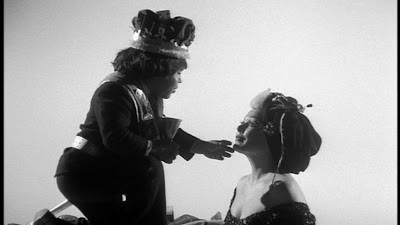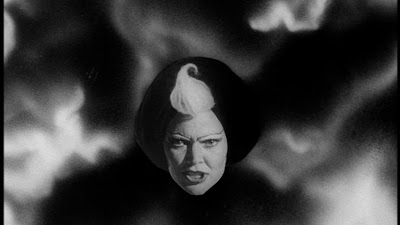The Quiet Earth
(1985) This low-key sci-fi thriller from New Zealand underscores the fact that
they just don’t make ‘em like this in Hollywood. The focus is on ideas and relationships
rather than overblown action scenes or elaborate set pieces. The beginning is similar to the Twilight Zone episode “Where is
Everybody?” but soon goes off on a completely different tangent. Zac Hobson (Bruno Lawrence) wakes up to find
that he could be the last person on Earth.
He eventually links up with two other individuals that have somehow
managed to survive this mysterious worldwide cataclysm (their reason for being
presents an interesting, yet enigmatic twist).
Zac was part of a shadowy multi-national science project
(initiated by the Americans) called “Project Flashlight” – part of a global
array meant to tap into the power of the sun as a means of virtually
inexhaustible power. As a direct result
of the experiment, virtually the entire worldwide population has vanished and
the fabric of the universe has been compromised. As if things weren’t bad enough, Zac
concludes that the changes aren’t over. The Quiet Earth raises many questions,
but only answers some. Much is left to
our own speculation. One of the dominant
themes is the guilt that Zac harbors over his culpability for the disaster,
bringing to mind World War II’s Manhattan Project. Zac is haunted by his compliance in an
endeavor that he knew was morally objectionable, and wants to remedy things, if
it’s not too late. While director Geoff
Murphy’s film ponders the philosophical and ethical implications of a science
experiment gone very wrong, he never forgets about the human element. Even in
this post-apocalyptic world, human connections still matter, including love,
companionship and the petty jealousies that go with them.
Rating: ****. Available on DVD.
The Innkeepers (2011)
Writer/director Ti West’s (House of the Devil) creepy haunted hotel flick
succeeds by teasing our expectations instead of overwhelming our senses. After more than a century in business, the historic
Yankee Pedlar Inn is closing its doors for good, and it’s the last chance for its
staff to learn if something unworldly really walks the halls. Luke (Pat Healy), a slacker in his 30s, and Claire
(Sara Paxton) 20-something without much direction, are the skeleton staff
assigned to the hotel in its final days.
Both leads provide likable, naturalistic performances, balancing the
tension with brief humorous moments. Kelly
McGillis plays one of the few remaining guests, a cantankerous, aging actress
who moonlights as a paranormal investigator.
Aside from the unassuming performances, there’s nothing particularly new
about The Innkeepers, with its requisite assortment of jolts, false
scares, and people splitting up when common sense dictates that they should
stay together. Amidst these rather
predictable elements, however, West really knows how to create a slow build
without showing his hand until the film’s conclusion. Save it for a chilly autumn evening for
maximum effect.
Rating: *** ½.
Available on DVD and Blu-Ray
The Resurrected (aka: Shatterbrain) (1993) This direct-to-video effort from
director Dan O’Bannon is worth a look, if you can find it. Writer Brent V. Friedman’s retelling of H.P.
Lovecraft’s short novel, The Case of Charles Dexter Ward elicits some
genuine chills, despite an uneven pace. John
Terry plays private detective John March, hired by Claire Ward (Jane Sibbett)
to track the whereabouts of her husband, Charles Dexter Ward (Chris Sarandon). Mr. Ward has become increasingly aloof, choosing
to immerse himself in his work rather than spend time with his wife. March follows Ward’s trail of blood and body
parts to a series of macabre experiments based on his ancestor’s journal. This otherwise cut-rate production boasts
some surprisingly good makeup effects and generates an ominous tone of Lovecraftian
dread. Unfortunately, the DVD appears to
be out of print, but it’s available for the time being through Netflix. Catch it if you can.
Rating: ***. Available on Netflix Streaming
The Sword and the Sorceror (1982) A would-be epic fantasy directed by Albert Pyun, which appeared
during the glut of similar 80s fare. The characters are paper thin, and the story
drags too much in the middle to be considered good dumb fun. Our nominal hero Talon (Lee Horsley) is mostly
ineffectual throughout the movie, and not very likable. His primary motivation seems to be claiming
the right to bed the woman who hired him to rescue her brother from the
clutches of the scheming despot Cromwell (Richard Lynch). The titular sorcerer (Richard Moll)
disappears after the first third of the movie, only to return at the flaccid climax. The Sword and the Sorceror’s dubious
claim to fame is one of the most awkward weapons committed to cinema, which
could only have sprouted from a 14-year-old boy’s imagination. Talon sports a three-pronged sword that can
launch the individual blades at his enemies (Which begs the question, does he
carry spares?). It’s a geek favorite
that just doesn’t stand the test of time.
Close, but no cigar.
Rating: **. Available on DVD.


























